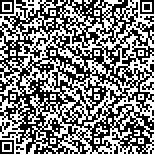附件
|
| 引用本文: | 马荣华,宋庆君,唐军武,潘德炉.太湖秋季水体遥感反射比的简单经验估测模型.湖泊科学,2007,19(3):227-234. DOI:10.18307/2007.0301 |
| MA Ronghua,SONG Qingjun,TANG Junwu,PAN Delu.A simple empirical model for remote sensing reflectance of Lake Taihu waters in autumn. J. Lake Sci.2007,19(3):227-234. DOI:10.18307/2007.0301 |
|
| |
|
|
| 本文已被:浏览 6898次 下载 4643次 |

码上扫一扫! |
|
|
| 太湖秋季水体遥感反射比的简单经验估测模型 |
|
马荣华1,2, 宋庆君3, 唐军武3, 潘德炉2
|
|
1.中国科学院南京地理与湖泊研究所, 南京 210008;2.卫星海洋环境动力学国家重点实验室, 国家海洋局第二海洋研究所, 杭州 310012;3.国家卫星海洋应用中心, 北京 100081
|
|
| 摘要: |
| 2004年10月现场测量了太湖水体的遥感反射比、后向散射系数以及其他必要参数, 实验室测量了水体的悬浮颗粒物质浓度。首先把太湖划分为3个大区, 即遥感反射比受湖底影响的区域(影响区)、不受湖底影响的区域(非影响区)以及可能受湖底影响的区域(可能影响区), 然后再把太湖分为高混浊、中混浊、低清澈以及高清澈等4类水体类型, 分别列出了各种水体区域类型的相关属性数据。在整个太湖区域范围内, 建立了后向散射和悬浮颗粒物质浓度的经验回归模型;仅在非影响区内, 建立了遥感反射比和后向散射的经验回归模型, 并可以利用悬浮颗粒物质浓度直接估测遥感反射比, 最后详细分析了模型的精度。 |
| 关键词: 遥感反射比 后向散射 悬浮颗粒 太湖 |
| DOI:10.18307/2007.0301 |
| 分类号: |
| 基金项目:国家自然科学基金资助(40671138) |
|
| A simple empirical model for remote sensing reflectance of Lake Taihu waters in autumn |
|
MA Ronghua1,2, SONG Qingjun3, TANG Junwu3, PAN Delu2
|
|
1.Nanjing Institute of Geography and Limnology, CAS, Nanjing 210008, P. R. China;2.State Key Laboratory of Satellite Ocean Environment Dynamics, Second Institute of Oceanography, State Oceanic Administration, Hangzhou 310012, P. R. China;3.National Satellite Ocean Application Service, Beijing 100081, P. R. China
|
| Abstract: |
| Remote sensing reflectance, backscattering and other corresponding parameters were measured in situ in Lake Taihu mainly following with NASA protocols.And suspended particulate matter (SPM) concentrations were measured in the lab mainly following with lake investigation criterion of China.Firstly, the whole lake was divided into three areas based on the literature*s results, where the remote sensing reflectance was influenced, not influenced, and possibly influenced by the lake bottom, respectively.They were named by the influenced area, the non-influenced area, and the possibly influenced area, respectively.Then, we divided the whole waters into two types and four sub-types based on the Secchi disk transparency measured in situ, viz.the turbid water, including the high-turbid water and the mid-turbid water, and the clear water, including the low-clear water and the high-clear water.And their properties were described by the corresponding data measured in situ or in the lab.In the whole lake, the empirical model was developed between the backscattering coefficient and SPM concentration.Only in the non-influenced area was developed the empirical model between the pairs of the remote sensing reflectance and backscattering coefficient.The remote sensing reflectance can be estimated approximately by SPM concentration and the estimation models were developed based on the mentioned above.Finally, the model precisions were analyzed in detail.Maybe it is a very good approach to preliminarily know about apparent optical properties of waters in Lake Taihu when there are not optical data measured in situ but only SPM concentrations measured in the lab. |
| Key words: Remote sensing reflectance backscattering suspended particulate matter Lake Taihu |
|
|
|
|